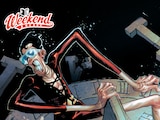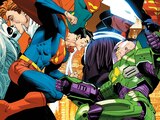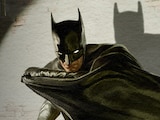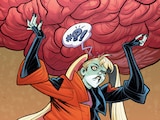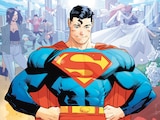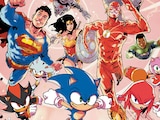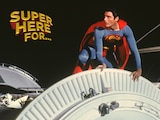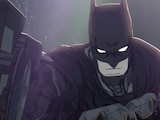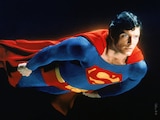Everyone knows the story of that night in Crime Alley: Zorro, shortcut, mugger, pearls, tragedy, vow. The scene which set a young Bruce Wayne inexorably towards his identity as Batman is an indelible part of our culture. But the years after that night, the transformation from a traumatized child to Gotham’s greatest hero, remain an attractive mystery. In his study, and his travels, how did Bruce Wayne become the world’s greatest detective? One of the world’s greatest fighters? An inventor, a chemist, an actor, an escape artist? Or to put it another way, where does he get all those wonderful skills?
A brand new ten-issue comic series beginning this week, Batman: The Knight, may provide some answers. But it’s just the latest Bat-tale to focus on this era of Bruce’s life. Many have come before, and from them, this is what we’ve learned about the most notable of Batman’s masters.
The Detectives

Unsurprisingly, Bruce’s first influence in the art of deduction was Sir Arthur Conan Doyle, author of the Sherlock Holmes stories. Bruce was by many accounts an avid Sherlock Holmes fan as a child, arriving at the solution to a given mystery before it was revealed by the end. But as for the detectives who personally took Bruce under their tutelage, we’d have to start with Harvey Harris. As originally told in 1955’s Detective Comics #226, and retold in The Untold Legend of the Batman, a young Bruce Wayne first donned a colorful, red and yellow costume to shadow Harris, in order to learn from one of the country’s greatest detectives. Harris took his role as young Bruce’s mentor in high enough spirits, even giving Bruce his first costumed codename: “Robin.”
Another early mentor was private investigator Dan Mallory, in 1996’s The Batman Chronicles #6. Under the guise of “Frank Dixon,” young Bruce Wayne apprenticed with Mallory to learn the tools of the trade. We also know that Bruce studied law enforcement independently, and was even enrolled in FBI training for six weeks before dropping out of the program.

One detective Bruce never got to learn from was Cassander Wycliffe Baker—a Holmesian figure introduced in 2020’s Batman #94, who refused to take Bruce on as a student. Rather, Cassander left Bruce Wayne with a much more important lesson, of which he was in dire need: how to cope when all your money, resources and dedication won’t get you what you want.
The Trackers

Although it’s fallen out of favor recently, there was a time when one of Batman’s sobriquets alongside the “Caped Crusader” and the “Dark Knight” was the “Masked Manhunter.” As the inmates of Arkham know too well, no man escapes the Batman. Through Bruce’s training, there were a number of key figures who taught Bruce the skills necessary to always find his perp. The most infamous of these mentors is Henri Ducard, a name you may be familiar with from Bruce’s origin story in the film Batman Begins. In the comics, Henri Ducard first appears in the 50th anniversary Batman story arc “Blind Justice” as an internationally wanted tracker of men in high demand. A young Bruce Wayne first encountered Ducard in France, sticking with the man just long enough to discover where their morals widely diverged. Of all the mentors to appear in Bruce’s past, Ducard is the one you can rest assured will emerge once more in Batman: The Knight.

But Ducard wasn’t the only shady figure Bruce would follow in pursuit of the art of pursuit. In Detective Comics #734, we learn Bruce was also trained by the world renowned assassin David Cain—better known now as the father of one of our favorite Batgirls, Cassandra Cain.
By the account of the master Batman writer Denny O’Neil, the last person Bruce ever trained under before returning to Gotham was a tracker as well. In Batman: Legends of the Dark Knight #1, we see a nearly ready Bruce in the mountains of Alaska, pursuing a target under the tutelage of bounty hunter Willy Doggett. Doggett perishes in the attempt, but Bruce is rescued from their fall by an Inuit tribe that shares with him a legend of a bat…a course in purpose and symbology which may have been Batman’s most crucial lesson.
The Martial Artists

Of Batman’s search for mentors, Bruce Wayne’s mission to seek out and learn from the world’s masters of combat is the most extensive. “Blind Justice” tells us of the Chinese master Chu Chin Li, and the Japanese master Tsunetomo. The sweet science of boxing came to Bruce courtesy of Wildcat, as Robin #31 shows us firsthand. There was Richard Dragon, who Bruce is seen training with in the 2000s Richard Dragon series, the DC Universe: Helltown novel, and the film Batman: Soul of the Dragon, under Richard’s own master, O-Sensei.
Bruce embedded himself in a great variety of clandestine martial arts organizations to learn their secrets, including the demon-hunting Ten-Eyed Men. 2012’s Detective Comics #0 shows us Bruce’s training with martial arts master Shihan Matsuda, from whom Bruce learns true mastery over his own body. Bruce begins to learn the martial secrets of both the Light and Dark sides of the Tao in Batman: Legends of the Dark Knight #52-53—but while he learns much, Bruce never achieves mastery of either aspect of the philosophy and its attending skills.

Bruce famously trains with the League of Assassins (or Shadows, as they’re called there) in Christopher Nolan’s Dark Knight trilogy, but that’s never been part of his education in the comics. He did, however, train with a master by the name of Kirigi, who Bruce learns much later had been enlisted as a trainer for League of Assassins recruits by Ra’s al Ghul as well.
But perhaps the most influential martial artist in Bruce’s early career is one we’ve met rather recently. He was never someone Bruce would ever call his master. But as a constant rival, following and even on occasion overtaking his path to martial perfection, the young fanatic who would be known one day as Ghostmaker pushed Bruce to new heights in a way that not even his vow and his mission could drive him alone.
The Specialists

For every other skill Batman has in his repertoire, there’s a man or woman who had it before him. Every time Batman escapes a death trap, he has Giovanni Zatara, as well as a man named Max Dodge, to thank for his training in escape artistry. He was taught to drive powerful cars at immense speeds with hairpin precision by the mad Don Miguel, trained in gadgetry by the brilliant Sergei Alexandrov and in acting and concealment of identity by none other than stage actor and former British intelligence agent Alfred Pennyworth.
Inspiration could always strike from anywhere. One of Bruce’s earliest tutors, in fact, was a young street thief in Thailand named Mekhala. You know that famous trick of Batman’s where he seems to disappear into thin air the moment Commissioner Gordon turns his head during a rooftop conversation? It was Mekhala who taught young Bruce how to do that.

The most exhaustive list of Batman’s specialist teachers can be found in Batman #433-435, “The Many Deaths of Batman,” where one of the tutors from Bruce’s past, demolitions expert Frederick Stone, eliminates Batman’s mentors one by one to cut his enemies off from following the trail of Batman’s education back to him.
By most accounts, it took Bruce Wayne twelve years to cross the globe, learning how to hit people, find people, and 1,001 other skills before he could become The Bat. But if you asked Bruce, we suspect he’d list his two most influential mentors as the ones who taught him his morality: Thomas Wayne, who dedicated himself as a doctor to saving lives despite his enormous fortune, and Martha Wayne, whose compassion and charity bore the mission to save every soul in Gotham with nary a cape or cowl. In his own time, Batman has since matured to the role of mentor himself, inspiring a new generation of heroes…and strengthening his own status as the platonic ideal of heroism in Gotham City as he passes those lessons on. After all, there’s no better way in the world to learn than to teach.
Batman: The Knight #1 by Chip Zdarsky and Carmine di Giandomenico is now available in print and as a digital comic book.
Alex Jaffe is the author of our monthly "Ask the Question" column and writes about TV, movies, comics and superhero history for DCComics.com. Follow him on Twitter at @AlexJaffe and find him in the DC Community as HubCItyQuestion.

